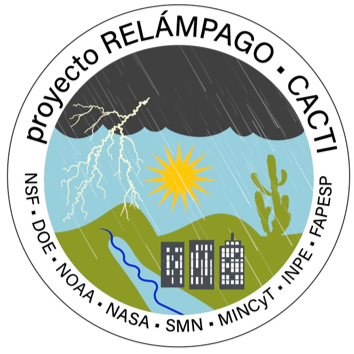
Research: Using RELAMPAGO observations to understand the thermodynamic, kinematic, and dynamic processes leading to heavy precipitation
Our research group took part in a large international field campaign, RELAMPAGO, in Argentina in November-December 2018. The project was sponsored by the National Science Foundation, in collaboration with many international partners. It was a unique and memorable experience! Subtropical South America is known to have some of the most intense convective storms on Earth, and until recently has not had many routine weather observations. We launched a large number of radiosondes during the field project, and were also involved in the forecasting activities to support the data collection effort. Some of our experiences were highlighted in this article from the Verge, and in several educational videos about the project.
We are now in the data analysis phase of the project, to use the information that was collected in the field to better understand the storms in that area, learn how they compare to storms in the central United States, and hopefully lead to better forecasts in the future.
Papers related to the RELAMPAGO project:
- Schumacher, R.S., D.A. Hence, S.W. Nesbitt, R.J. Trapp, K.A. Kosiba, J. Wurman, P. Salio, M. Rugna, A.C. Varble, and N.R. Kelly, 2021: Convective-storm environments in subtropical South America from high-frequency soundings during RELAMPAGO-CACTI. Monthly Weather Review, 149, 1439-1458.
- Piersante, J.O., K.L. Rasmussen, R.S. Schumacher, A.K. Rowe, and L.A. McMurdie, 2021. A synoptic evolution comparison of the smallest and largest MCSs in subtropical South America between spring and summer. Monthly Weather Review, 149, 1943-1966.
- Nesbitt, S.W., and Coauthors (including R.S. Schumacher), 2021: A storm safari in Subtropical South America: proyecto RELAMPAGO. Bulletin of the American Meteorological Society, 102, E1621-E1644.


